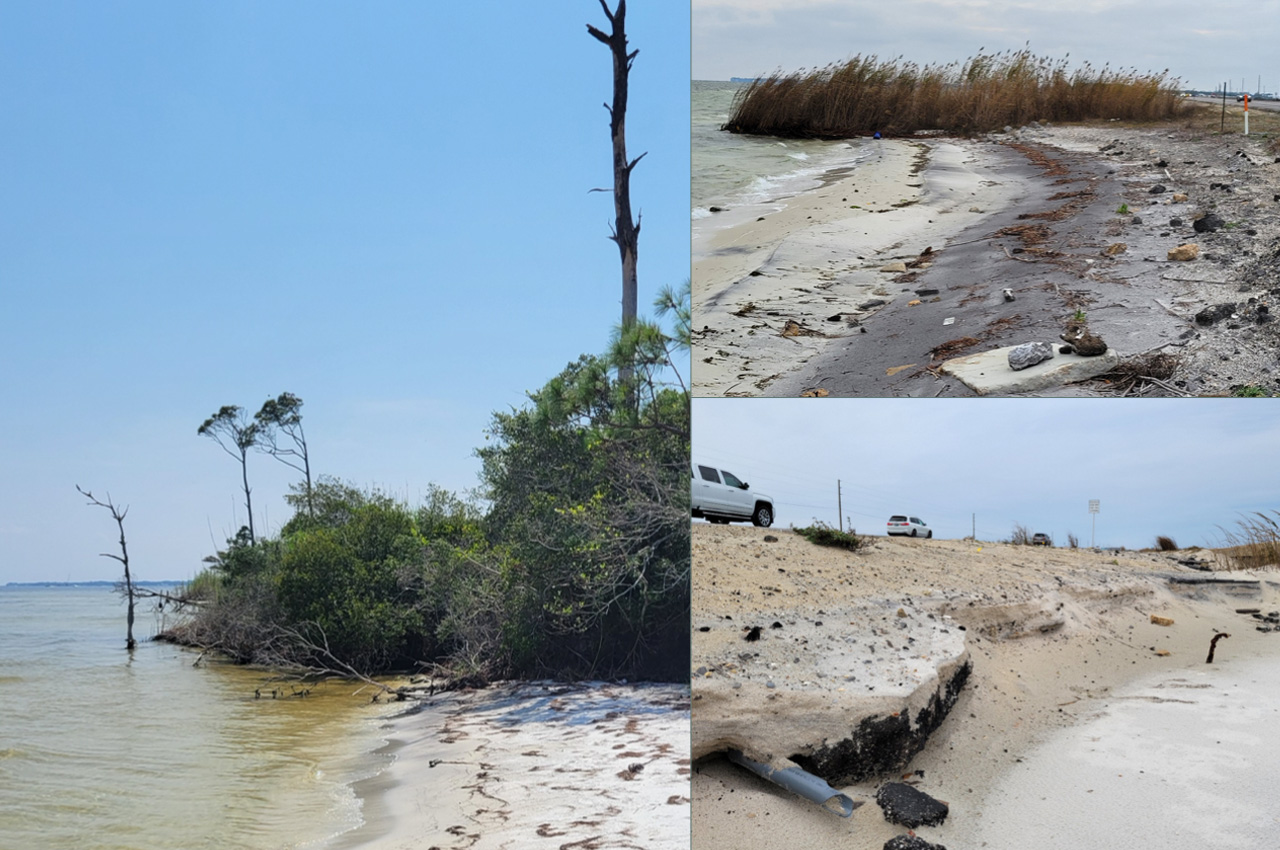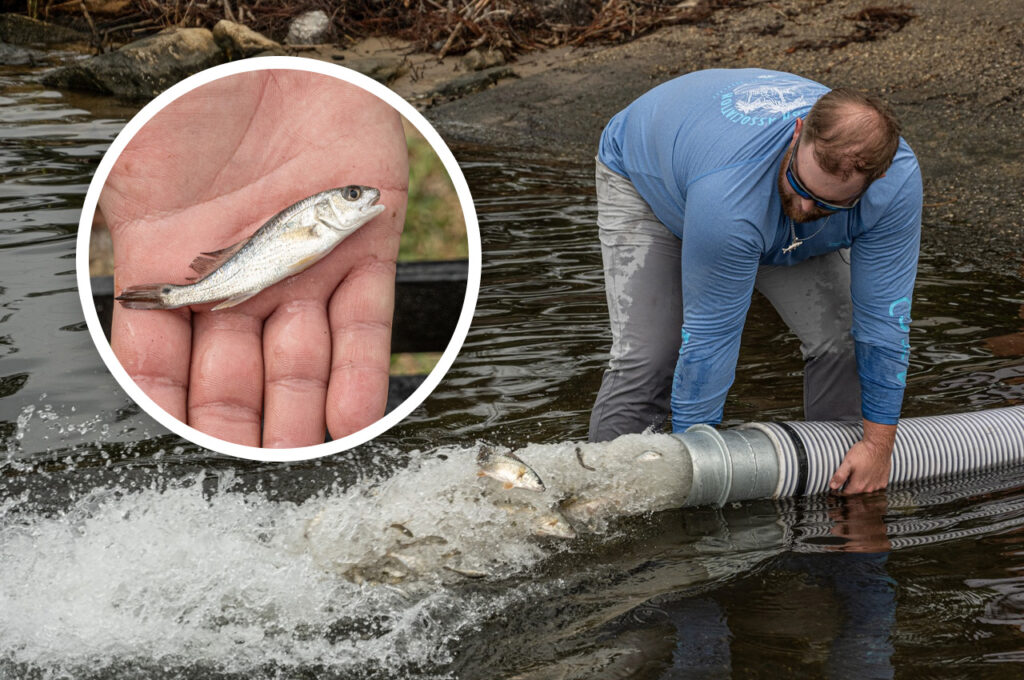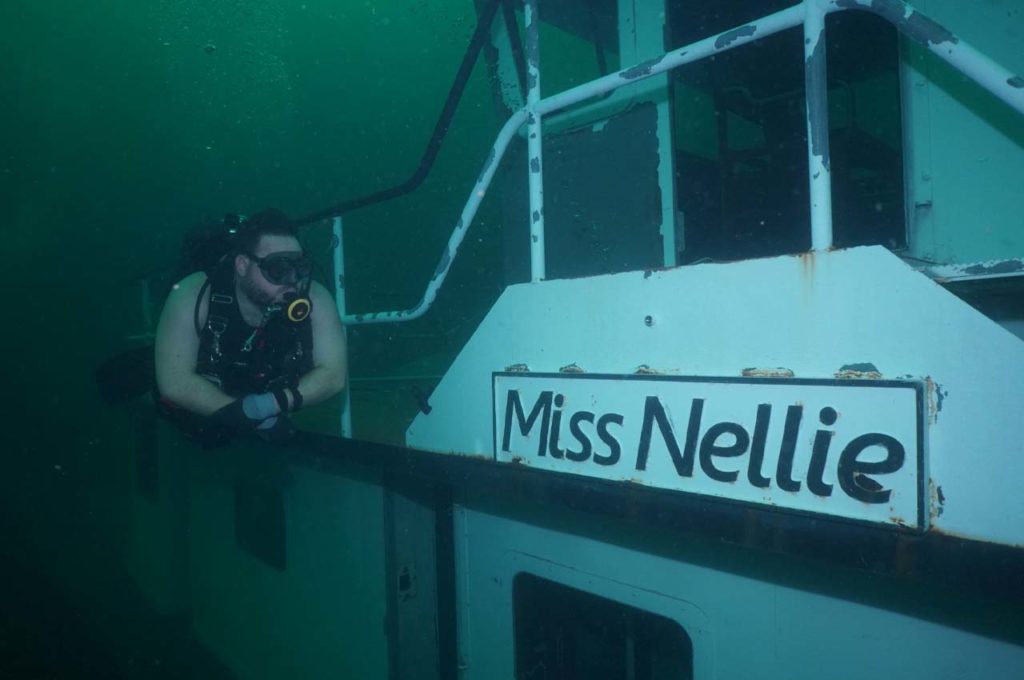Okaloosa County has been awarded $750,000 from the National Fish and Wildlife Foundation to begin planning a natural defense against worsening coastal erosion that threatens one of northwest Florida’s vital transportation corridors.
- The grant will fund site assessments and preliminary design work for a 4,500-foot living shoreline along Highway 98 on Okaloosa Island, where the road comes within 20 feet of Choctawhatchee Bay in some areas.
“The living shoreline project is a proactive approach to address the coastal erosion issue while simultaneously providing multiple benefits to the ecosystem, community, and military,” said Michael Norberg, Okaloosa County’s Coastal Resource Manager. “By stabilizing the shoreline, we not only help protect the adjacent roadway but also create valuable habitat for a variety of species, enhance coastal resilience, and offer new recreational opportunities for residents and visitors alike.”
The project represents a collaborative effort between Okaloosa County, Eglin Air Force Base, and The Nature Conservancy. Unlike traditional hardened infrastructure such as concrete seawalls, the design will incorporate natural elements like limestone breakwaters and native vegetation to stabilize the shoreline while creating marine habitat.

The need for shoreline protection became evident after Hurricane Dennis in 2005 caused significant damage to the roadway, resulting in extended lane closures and requiring nearly $19 million in repairs and improvements.
- According to Norberg, the situation has grown more urgent as coastal erosion accelerates, threatening both the roadway and underground infrastructure, including fiber-optic communication lines used by both military and civilian entities.
The stretch of Highway 98 serves more than 43,300 vehicles daily and ranks in the 91st percentile of busiest roads in the county. It’s vital for military operations at Eglin and Hurlburt Air Force Bases, hurricane evacuation, and regional commerce. Without this connector, traffic would need to reroute more than 30 miles around the bay, adding nearly an hour to travel times.
- The project aims to create more than 1.5 acres of intertidal reef habitat and 6.2 acres of protected seagrass recruitment area. It will also enhance 0.85 miles of native vegetated coastal habitat, including protection for an established nesting location for state-threatened shore birds.
The project also aims to boost tourism opportunities along the shoreline. Tourism plays a vital role in Okaloosa County’s economy, with eco-tourism alone generating $734 million in direct spending in 2023.
The living shoreline project, supported by $100,000 in Tourist Development Department matching funds, will support fisheries through habitat creation and enhancement as well as provide a unique snorkel opportunity along the reef breakwater structures.

“The need to expedite implementation was highlighted following the 2024 hurricane season in Florida,” said Michael Norberg, Okaloosa County’s Coastal Resource Manager. “Although Hurricane Helene made landfall more than 150 miles to the east, the northerly winds we experienced over a three or four day period resulted in the loss of more than four feet of shoreline in some parts of the project area.”
Norberg’s monitoring efforts have documented ongoing erosion over the years, which he attributes to strong seasonal winds from the north-northeast during the fall and winter months.
- “We’re still awaiting some additional grant funding that will allow us to expand this initial phase, effectively ‘skipping’ another grant cycle, if awarded,” said Norberg. “This additional funding would take the initial phase of site analysis and preliminary design and allow us to move directly into final design and permitting.”
The grant is part of NFWF’s 2024 National Coastal Resilience Fund, which awarded $139 million across 94 projects nationwide. The projects leveraged an additional $141 million in matching contributions for a total conservation impact of $280 million. Once design work is complete, the county plans to seek additional grant funding for construction of the living shoreline.
The project has garnered support from multiple organizations including the Florida Fish and Wildlife Conservation Commission, Emerald Coast Regional Council, and the Choctawhatchee Basin Alliance.





